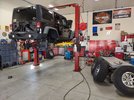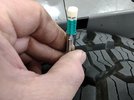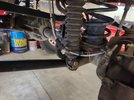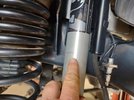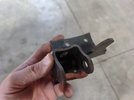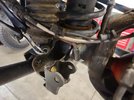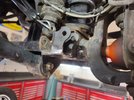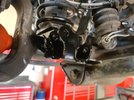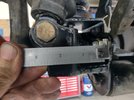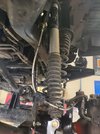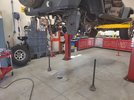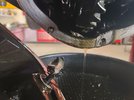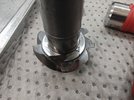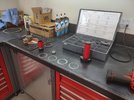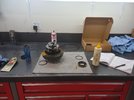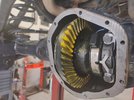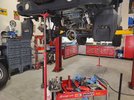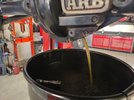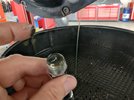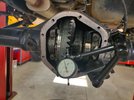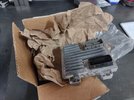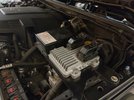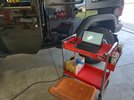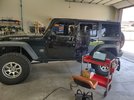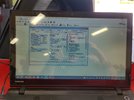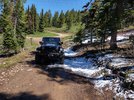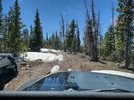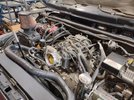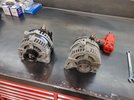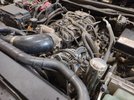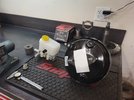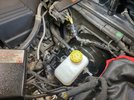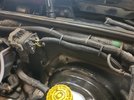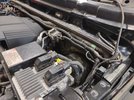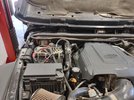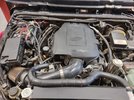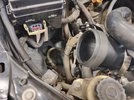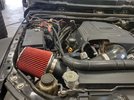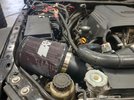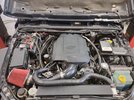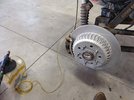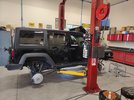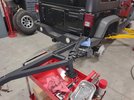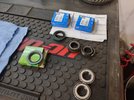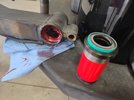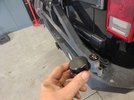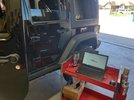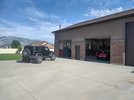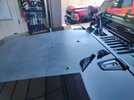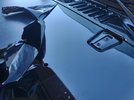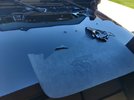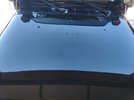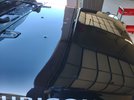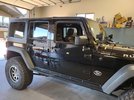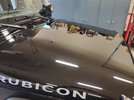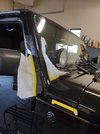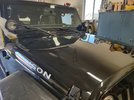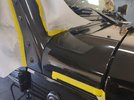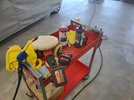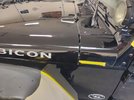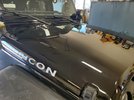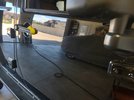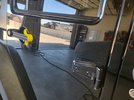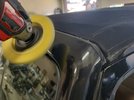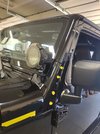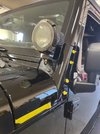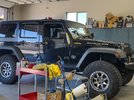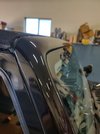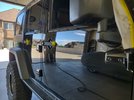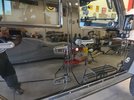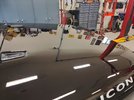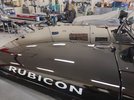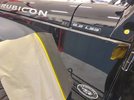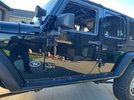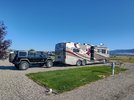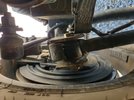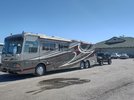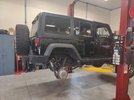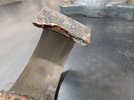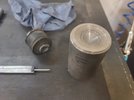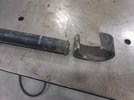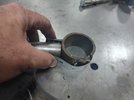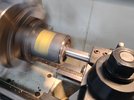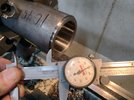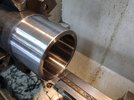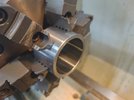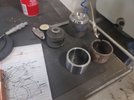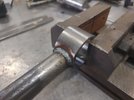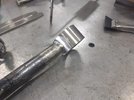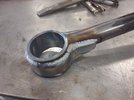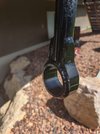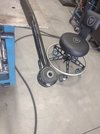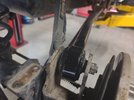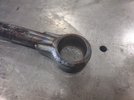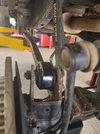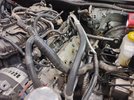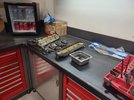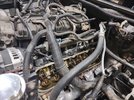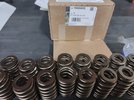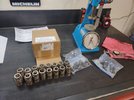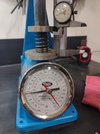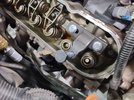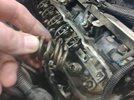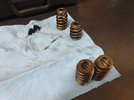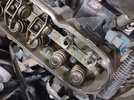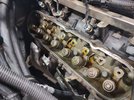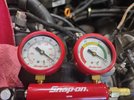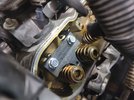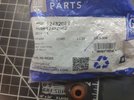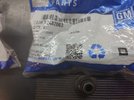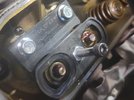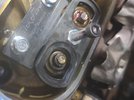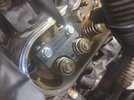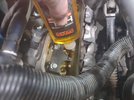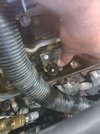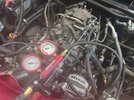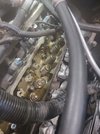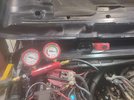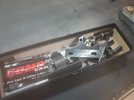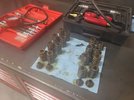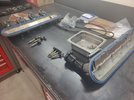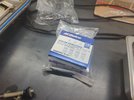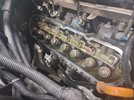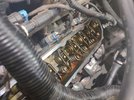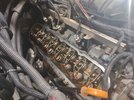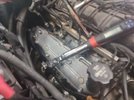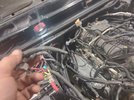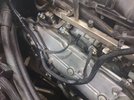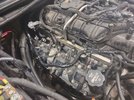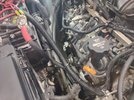I hope everyone has a great holiday season and a warm welcome into 2024.
I've been away from the forum for a bit as I've been trying to get caught up on a shit-ton of work and a few projects.
The Saturday evening before Christmas, the wife and I were running to grab some take-out dinner and then looking forward to relaxing for the evening in front of the fireplace. That went to shit relatively soon.
As we were driving to grab dinner everything was fine, we were just lumbering along the old highway that runs north/south parallel to the interstate as we do a lot of driving between our home and surrounding areas without getting on the interstate. We were just cruising about 50 MPH and hit a couple of stoplights, not hot-rodding the Jeep or even above about 2k RPM for that matter. On about the third or fourth stoplight as we coasted to a stop, the Jeep started running rough and missing. My first thought was fuel as we had just fueled up the previous trek from home.
By the feel it felt quite bad and I thought I'd get a MIL anytime and sure enough it popped on. The wife wanted to know what it was and I mentioned it could be a bad tank of fuel but didn't think it would be that severe as we filled up with still a half a tank. I told her it would probably be a P0300 code as it felt like more than one cylinder.
We limped the Jeep back home and it could barely get out of its own way. Once in the shop I threw the scanner on it and sure enough, code P0300 along with a P1380 and P1381. The last two I was not familiar with so upon a quick lookup I discovered those were related to rough road conditions. I doubted very seriously that the smooth highway would trigger a misfire event after all of the actual rough roads we've had our Jeep on so I discounted those two codes and figured they were set by the poorly running engine, not the other way around.
On Sunday morning I ran out to the shop for a bit to do some basic diagnosis. My first thought was it had to be on the secondary side of the ignition if it was ignition related at all because had it been a failure on the primary side the ECM would have detected either a short or open and indicated the exact cylinder. I then thought that maybe there were some "sympathy" misfires in order to trigger a P0300 rather than a specific cylinder.
With the scanner connected and looking at the freeze frame date nothing was really jumping out at me so I decided to fire it up and watch specifically misfire detection. I noted cylinder #2 was missing consistently and even restarting the misfire counter as it climbed. I also noted cylinder #4 had a few here and there at idle but above idle the misfires ceased. My thinking was that if there was a blown head gasket it could be shared between those two adjacent cylinders so a compression test would be the next step.
Cylinder #2 showed no compression.
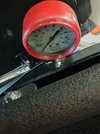
Cylinder #4 showed 175 PSI. I went again and retested cylinder #2 and again showed zero PSI.
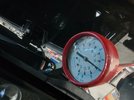
I also know that cylinder #2 is not one of the AFM cylinders on a GM LS AFM engine as those are cylinders 1, 4, 6 and 7. But cylinder #4 being in the mix made me want to confirm compression on that cylinder. Also, as a rule of thumb when an AFM camshaft or lifter fail, the engine usually has a definitive clicking or clacking noise of the slop in the valvetrain and other than an odd huffing or puffing sound echoing through the intake and exhaust the engine was quiet.
So that concluded my testing for Christmas Eve as I had to get into the house and make my "world famous chili" for dinner as we had quests coming in a few hours. The wife was awesome and knew how bothered I was by this and told me she could take care of dinner if I wanted to stay out in the shop and find the problem but I was not going to let this ruin my Christmas Even or Christmas day with my kids and grandson.
On Christmas morning while the wife was getting ready and us having a few hours before having to be to her dad's, I ran out to the shop just to pop a rocker cover off and put eyes on the valvetrain. I was suspecting a broken valve spring by the end of the earlier day's testing but wanted to make sure it hadn't dropped into the cylinder and caused catastrophic issues, so I was anxious to open up the right side of the engine.
Sure enough, as soon as I removed the coil bracket and rocker cover the problem was staring right at me. Cylinder #2 exhaust valve spring failure.
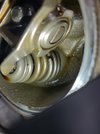
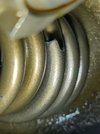
I removed the rocker arms on cylinder #2 to get a slightly better look but it didn't look any better with the rocker arms removed.

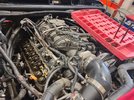
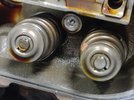
This has been an odd failure and I realize it is a fluke or rare failure at that. Valve spring failures on a stock engine are extremely rare and to be honest, even in all of the race engines and hi-po engines that I've built over the past 3+ decades of my life, I have never experienced a valve spring failure. I used to think it was because how meticulously I set up heads by testing pressures and heights but now I think there may been some luck involved as well.
Valve springs are kind of hit and miss as far as failures and from my past experience with race engines and hi-po street engines, many just don't get the miles on them that a daily driver does so this has been a new experience. Also with hi-po engines many times there are cam changes along with heads being on and off several times and valve springs get changed at a higher rate so many times they never get anywhere near the cycles on them as a daily driver.
That brings me to the repair. Conventional thinking would suggest that this being a fluke failure to just replace the broken valve spring and put it back together and run her. However, I know how my mind works and as much as we are off-road in the back country I feel my confidence would be shaken to the point it would effect my enjoyment wondering when another spring will fail.
I think to calm my anxiety about a future failure I should replace all 16 springs and move on and then down the road to a full AFM delete of the hardware. I have the AFM shut off in the operating system and have never had it activated in the entire time this L94 engine has been in my Jeep but I think even with the system deactivated in the software, they can still have hardware failures once they get well over 100k from what I've seen. In order to do the top end I would need to raise the body back off the chassis to gain access to properly perform the top end of the engine and feel that may be premature at this time. I think I'll replace the valve springs, seals and put it back together for a year or two then get all of the new parts to delete the AFM hardware and perform that modification when I can properly schedule it into my workflow.
More to follow.






